Gus on the Go: Year Three or: Maturing
/This is the third and final part in the series on the background of Gus on the Go. It doesn’t mean I’m not going to write about it again, but I will likely stick to current events in the future. What an odd sentence. If you haven’t already, check out part one and part two.
Also, we just[1] released our first language for our sequel app Stories by Gus on the Go! It is Spanish (you’ll see why below), but other languages will follow shortly. Be on the lookout for future posts discussing how this new app evolves our business.
The title of this post is Maturing, as by year three, we had gone through the learning curve of releasing and marketing an app and were now in much better state than years one and two. This does not mean we knew everything there was to know about selling language learning apps for kids. Maturing also means that we continue to learn and improve our business.
The Great Hindi and Arabic Experiment: Race You to the Bottom!
In November and December of 2014, we decided to run an experiment on our two worst selling languages, Hindi and Arabic. Both were released earlier that year and both disappointed in terms of sales. Prior to the experiment, we had sold a total of 70 copies of Hindi in 9 months and 113 copies of Arabic in 7 months.
We had started to wonder if our $4 price tag was too high a barrier of entry for most people[2]. We’ve all heard something along the lines of “people pay $4 for a cup of coffee, but not for an app”. This isn’t really a fair comparison. With so much crap in the App Store, they at least know what they’re getting with the coffee.
The question was, would people try our two worst performing apps for free? We did a two week price drop with the sole intention of learning something about our market. We had no plans to upsell anything as our app had no In-App Purchases. We did it for the data.
We were only able to discount the apps in the Apple AppStore and the Amazon AppStore. At the time a switch to free on Google Play was required to be permanent, so we left that one alone. The results were beyond our most optimistic expectations.
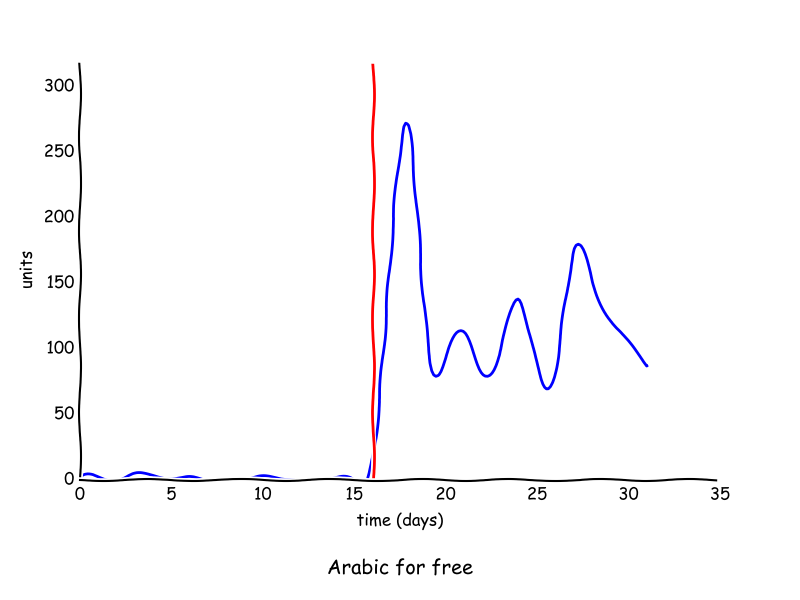
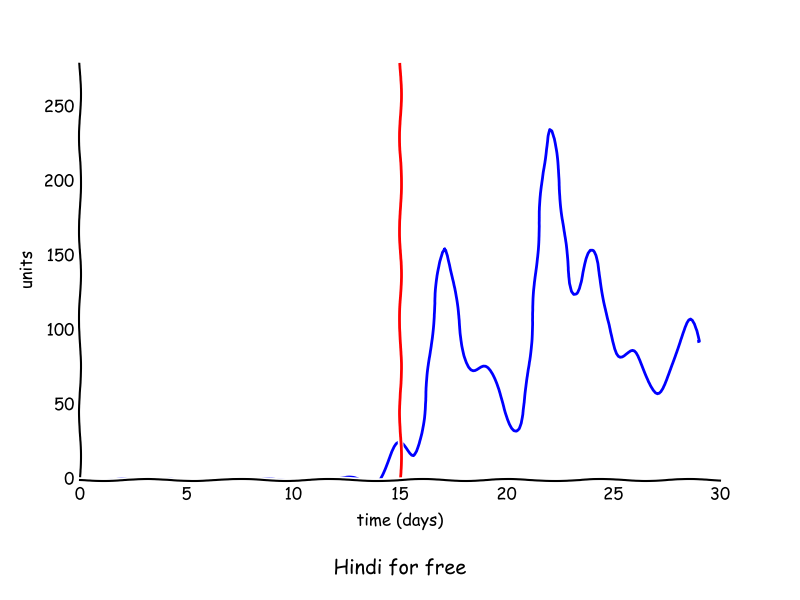
During the two weeks (15 days for Hindi and 16 for Arabic, actually), Hindi was downloaded 1,427 times and Arabic 1,898.
| Language | iOS | Amazon | Total |
|---|---|---|---|
| Arabic | 892 | 1,006 | 1,898 |
| Hindi | 153 | 1,274 | 1,497 |
Had we offered an IAP for the same price that our app normally sells, conversion rates of 5.9% for Arabic and 4.9% for Hindi during those two weeks would be needed to equal the revenue of the previous 9 months.
Part of this, of course, is due to the publicity that price drop alert sites automatically give. But that wasn’t the whole story. We noticed language organizations more likely to recommend the apps to their followers and members after it was free to use. Perhaps, they felt there was no risk of backlash from their members if the app turns out to suck because it had cost nothing to try.
This is a truly interesting hypothesis. If you have the ability to offer something for free, not only will more people try it out, but the media is more likely to recommend it because it is safe. This is, however, useless without a way to generate revenue.
This experiment greatly influenced our business model for Gus 2[3]. Man, do I love data!
The Lesser German and Portuguese Experiment
At the same time, we decided to run a parallel experiment on two apps that do OK by our standards, German and Portuguese. German does much better than Portuguese, but also came out over a year before. On average, German currently sells 2–3 times more apps than Portuguese.
We weren’t going to make these apps free. We wanted to learn something different. Over the years, we had slightly experimented with price. Starting at $4.99 briefly dipping to $2.99 before settling at $3.99. We found, for our apps, sales volumes did not decrease when going from $2.99 to $3.99.
However, we had never tried the rock bottom paid tier for any of our apps before. $0.99. We wanted to test it out with these two languages. Again for two weeks.
For the two weeks prior to the experiment, we sold 23 copies of German and 9 copies of Portuguese. At the $0.99 price point, we sold 51 copies of German and 17 copies of Portuguese. However, this is what the revenue breakdown looked like:
| Language | 2 Weeks Prior ($3.99) | 2 Weeks Of ($0.99) |
|---|---|---|
| German | $58.88 | $42.19 |
| Portuguese | $24.30 | $11.84 |
Armenian
In the fall of 2014, we were contacted by the Armenian General Benevolent Union (AGBU). This is a non profit organization, whose mission is to promote the Armenian culture, including language. They liked Gus on the Go and were interested in creating two Armenian versions – Eastern Armenian, a dialect spoken in Armenia, and Western Armenian, which is spoken in the Armenian diaspora.
By this time, We had started planning Gus 2 and were worried that adding more Gus 1 languages would distract from this priority. However, Alice and I are suckers for niche languages. The honest and heartfelt thanks we receive from parents, who speak niche languages, is extremely rewarding. They often have trouble finding any material to help them raise their children with their mother tongues.
We signed a contract with the AGBU and by March 2015, we had two new languages in our series.
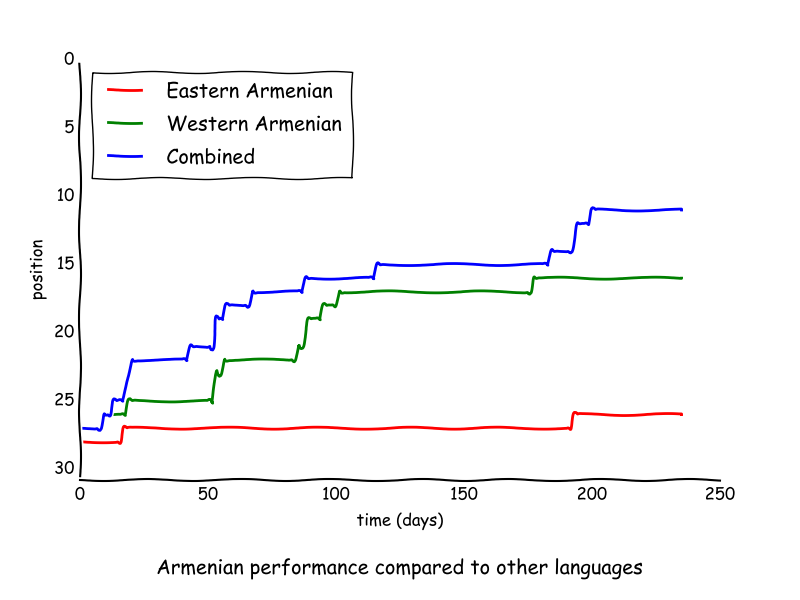
This chart shows how the two Armenian dialects have performed against our other 26 apps over time. The current positions are Eastern in 26th place, Western in 16th place, and combined they’re in 11th place. And this despite only having 8–12 million native speakers.[4] Amazing what a little marketing can do! (Notice a theme?)
The nice thing about our partnership with the AGBU, is that they’re just as interested as we are in seeing the apps succeed. They have a direct line to Armenian speakers and are able to effectively get the word out. I’ve even heard a rumor that they purchased a giant advertisement for Gus in an Armenian airport. I’ve asked for pictures, but have yet to see any.[5]
Startup Accelerators
Sometime in the spring of 2015, I was listening to a podcast with an interview with a Y-Combinator graduate. It made me wonder if a startup accelerator could be something for us. Up until now, we had been bootstrapping our business, but that didn’t mean that there couldn’t be something else out there that could work for us.
I convinced Alice that we should at least apply just to see what would happen. We decided to apply to two simultaneously and to a third later on. The two, to which we initially applied, were Y Combinator and Imagine K12. The latter was focused on software for education and was created by a venture capitalist, who had worked with Paul Graham on Y Combinator. In fact, the application forms for the two were almost identical, so it really wasn’t more work to apply to both.
We realistically did not think we could get into Y Combinator, but Imagine K12 seemed like a really good fit. We were pleasantly surprised to get a video conference interview with the 3 partners of Imagine K12! They said our application was especially compelling. We later decided we were interesting to them because we boldly claimed we were going to be the next Magic School Bus and do $50 million in revenue within a few years. Yes your read that correctly. Ballsy.
We really tried to prepare for the interview, but we did a terrible job. Not really knowing what the VC world was like, we prepared for the wrong types of questions. We should have watched Silicon Valley beforehand. The one very important question that we stumbled on was how were we going to scale to a million customers. And by stumbled, I mean I babbled incoherently for about 5 minutes like a politician trying to answer questions about misusing campaign funds at a strip club. Needless to say, the next day we received our rejection email.
A few months later, we decided to again apply to an accelerator program. We decided on co.lab, as they were an even better fit for educational software.[6] This time, to avoid having an embarrassing, babbling answer to how we were going to scale, we changed our $50 million forecast to a conservative $2.3 million. Needless to say, we did not get to the next round.
The lesson? The best way to get an accelerator’s interest is to aim high, just make sure you have a reasonable explanation of how to get there.
Oh well, we didn’t want to give up control of Gus on the Go anyway.
A huge benefit to us, by going through the application process, was it really helped us refine what our concept of Gus 2 was going to be. Prior to applying, we had a very vague idea that we wanted to do a sequel, but assumed that was enough to get started. Nope. It really wasn’t. This application process required us to think through what the business model would be, which helped further define how the app would work. That alone was worthwhile.
In episode 212 of Core Intuition, Manton had a similar experience when applying to the Slack Fund. He said crafting the email to apply helped him clarify what the appealing thing of his idea might be.
Overall Sales Update
Update on our sales for year 3. Due to working on Gus 2 and not really concentrating on Gus 1, sales were fairly flat. If you want, you can possibly see a trend line going slightly up.
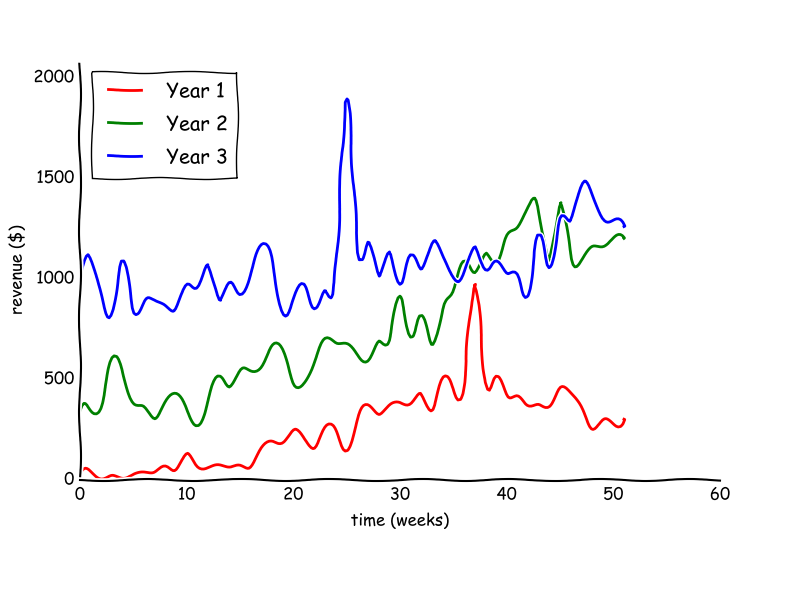
This is an interesting breakdown of our top 6 languages for each of the first three years of Gus on the Go.
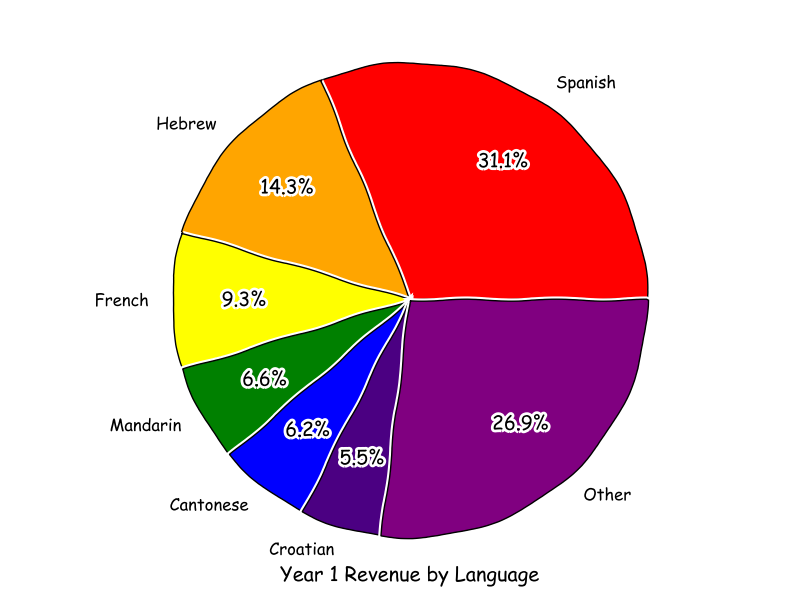
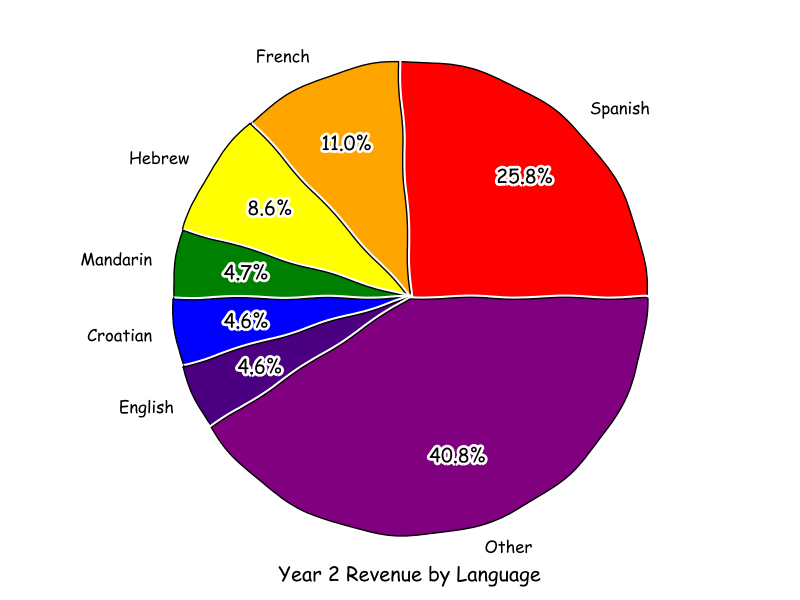
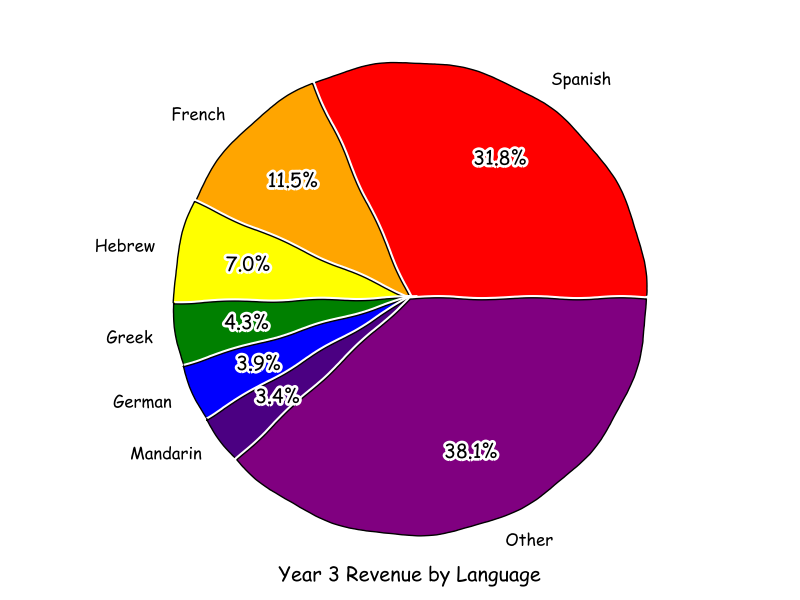
But you can understand why Spanish is our first language choice for Gus 2. This also helps explain why our geographical sales have crept back toward 75% in the US, to which I alluded in my year two post. Spanish sales have gotten stronger relative to other languages and 96% of our Spanish sales occur in the US.
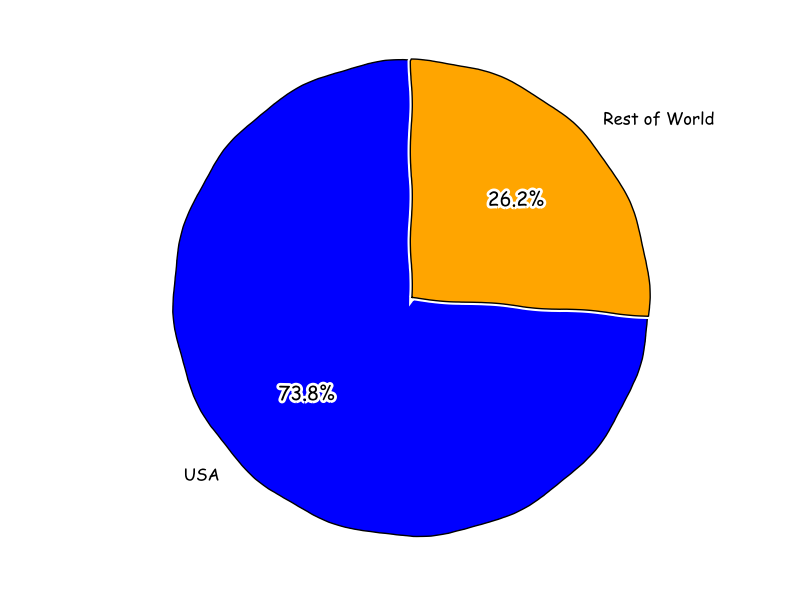
Email List Update
Quick update on our email list growth. By the end of year three, our list was 4,882 emails strong. Again, I haven’t done much analyzing of the data yet. This is the first time I generated or looked at this graph.
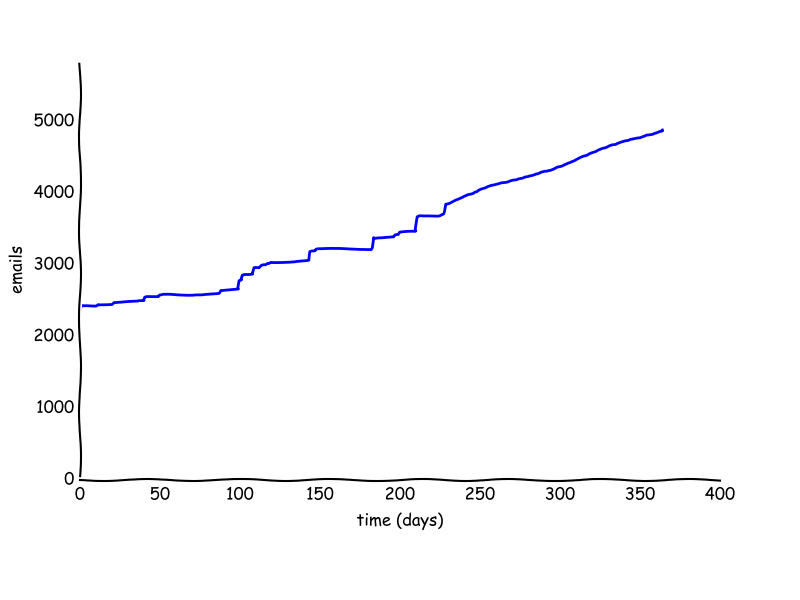
Year Three: By the Numbers
- Sales: 22,872
- Revenue: $60,024
- 1* Reviews: 2
- 2* Reviews: 0
- 3* Reviews: 1
- 4* Reviews: 2
- 5* Reviews: 15
- Languages Available: 28
- Total Apps: 84
- Email List Size: 4,882
Where Do We Go From Here?
Congratulations! If you have read all three posts, you now have a pretty good background on Gus on the Go. Next time, I’ll will start with Gus 2[7], its business model, and why we changed it. After we have enough meaningful data, I should being doing some posts on that too.
In the meantime, you can find me on Twitter @yonomitt. Feel free to start conversation with me there. I’m also sure I’ll tweet when future posts are up.
Have a nice day,
Yono
-
On 02/02/2016 ↩
-
Well, duh. ↩
-
I’ll wrote about this soon, I promise. ↩
-
If you see it, take a picture and send it to me! I will be forever grateful. ↩
-
It turns out that Imagine-K12 was more focused on software to help educational institutions to teach more efficiently as opposed to software to teach. A subtle but import difference. ↩
-
Gus 2 was just our working title. The new app is called Stories by Gus on the Go ↩
